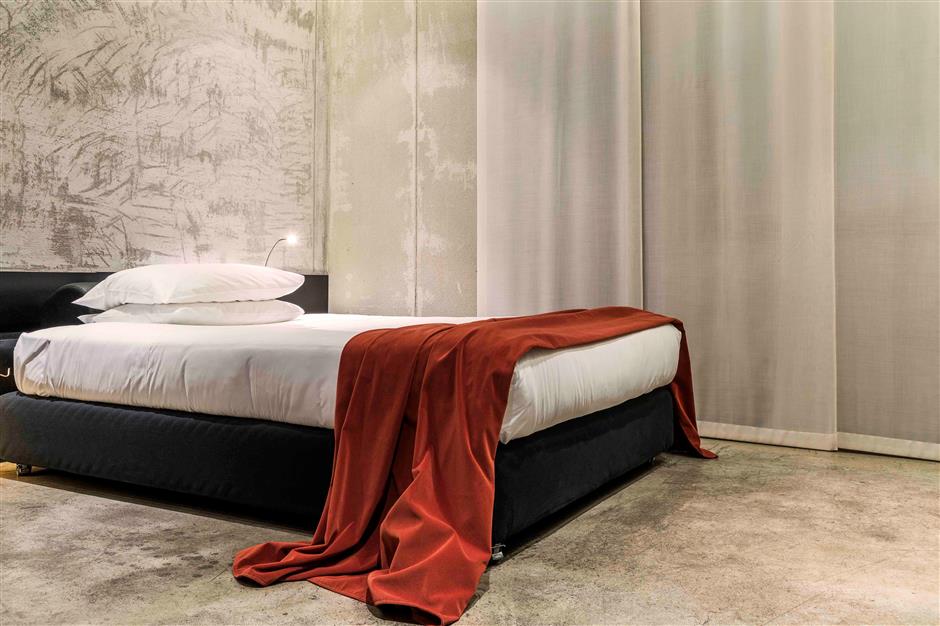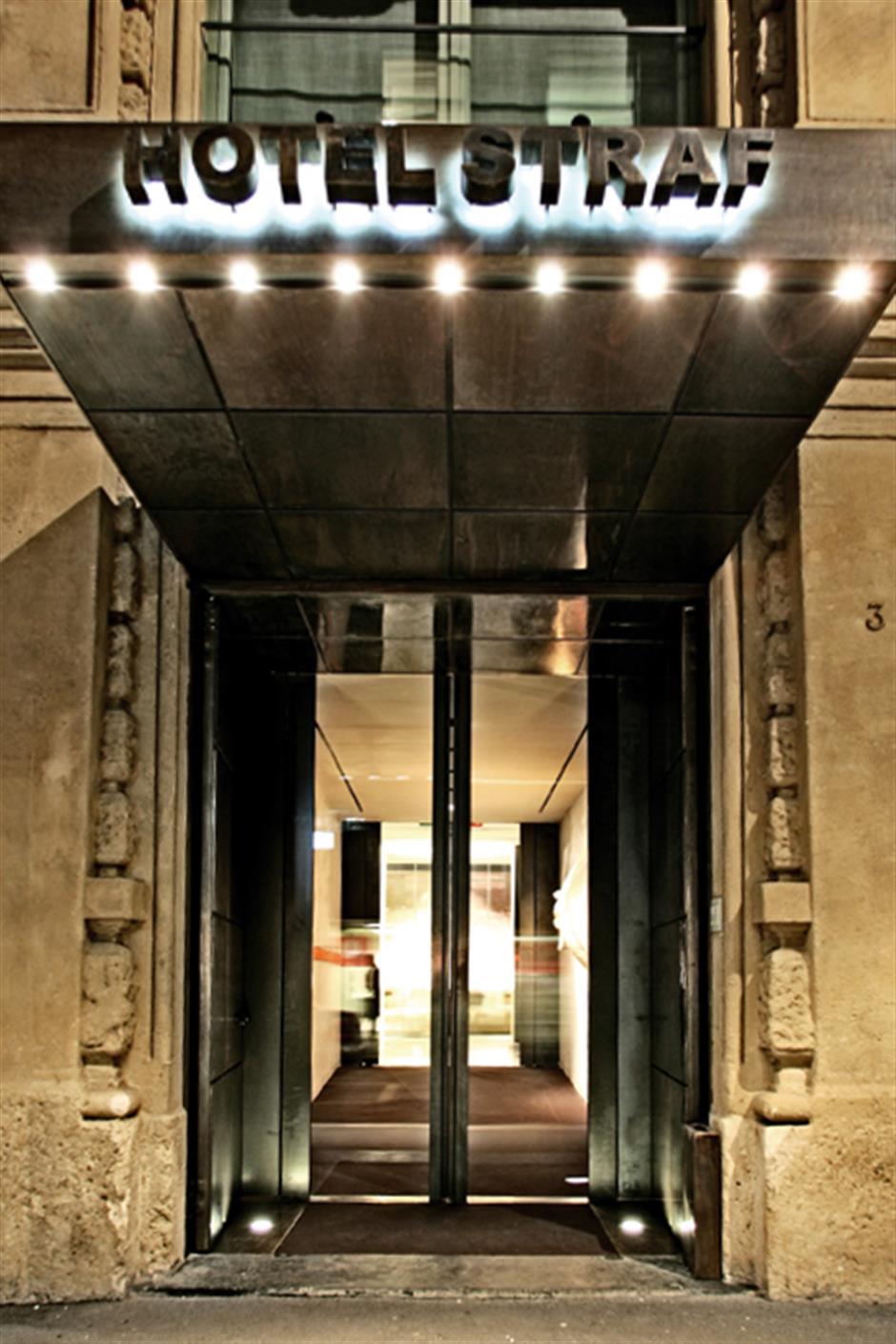An ultra-cool designer hotel as installation art
The Straf is an ultra-cool designer hotel that had been imagined almost as an installation, a concept from which architect and artist Vincenzo De Cotiis began to extract a multitude of elements associated with contemporary art.
Hence the aesthetic development is based on ethical criteria of recycling objects and placing them in new surroundings.
The hotel right next to the Duomo of Milan was built in the 19th century and is characterized by a solemn and severe facade, with moldings typical of that period.
“Inserting a place of contemporary and vibrant hospitality within a historic container, in stark contrast to the pre-existing building, through the search for unfinished and experimental materials, has been the core of the design process,” said the designer originally from Gonzaga, Italy.
“The place itself has made possible the creation of unconventional spaces, gutting its original structure almost entirely.”
The hotel’s urban style and the materials used recall the Arte Povera movement of the 1960s and 1970s, whose artists used non-traditional organic materials including slate and wood.
De Cotiis is considered one of the main figures of the international contemporary design scene. His works, highly collectible and unique pieces, are exhibited in his gallery in Milan and at leading international design fairs.

Rooms are characterized by combined materials according to two main approaches: black slate, or cement combined with burnished brass.
“The whole design unfolds around new ideas and theories on materials. Initially identified for their natural pigmentation,” he said. “They are transformed through almost exclusively manual interventions, already imagining the final effect that light will create when reverberating off their surfaces as a result of manipulations and interventions, many of them experimental.”
The cement used for stairs and floors, the oxidized brass, split slate, scratched mirrors, burnished iron, and torn, aged gauze captured between sheets of glass induce a warm atmosphere in spite of the hard materials often of industrial origin.
Straf demonstrates a differentiation between the types of rooms and creates defined spaces which are characterized by combined materials according to two main approaches: black slate or cement combined with burnished brass, with mirrored walls giving an overall effect of space.
The design of the rooms demonstrates macro-decorative elements which, according to aesthetic value, create an effect of expansion of the space by using illusionary perspectives, such as wall paneling and palisades that appear to extend into infinity. Richly textured paintings add warmth and depth to the rather cool interiors.

The hotel right next to the Duomo of Milan was built in the 19th century and is characterized by a solemn and severe facade, with moldings typical of that period.
Seven of the 64 rooms include a massaging armchair and the individual massage areas are within sight of the sleeping area but separated by crystal walls.
The hotel is identified by its alternative to cliches and standardization.
It is a “place of choice” that runs away from production line furnishings. This emphasis is reflected throughout the rooms and public areas, from the bathrooms which are fitted with worn mirrors and designer sinks, to the tailor-made chairs, sofas and the lighting.
The hotel, as a member of Design Hotels, expresses a concept that invokes simplicity, art and emotions. The eclecticism also characterizes the first-floor lobby and the bar.















